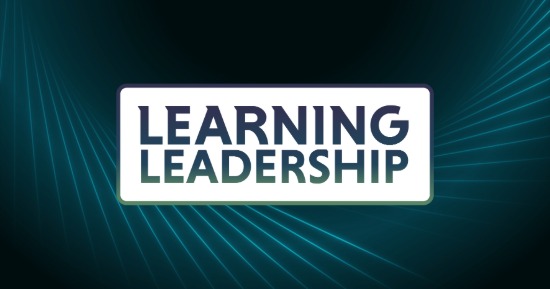Using a development model to design eLearning can impose a processfor design and development that ensures the end result meets stated needs andgoals. ADDIE is a well-known and widely used instructional design model that iscommonly used, or adapted for use, in creating eLearning. The phases of the ADDIEmodel translate into concrete steps or tasks for instructional designers.
ADDIE’s five phases
Analyze: In the analysis phase, the goals aredefined. What is this training intended to accomplish? Will it solve a problem,teach a skill, reinforce existing knowledge, or do something else? How issuccess defined? The target audience is also defined at this stage.
Design: In the design phase, measurable learningobjectives are formulated to meet the course goals. The design of the instructionalmethod, including any exercises or interactivity, must fit with both the coursegoals and the learning objectives.
Develop: Content creation, as well as coursedevelopment, occurs in the third phase. Storyboarding or wireframing occurs inthis phase, usually as a precursor to actual coding or course development.
Implement: The course is released in this phase, andthe first learners use it. These learners complete the course and begin toapply what they’ve learned.
Evaluate: Learners might provide feedback, via “smilesheets” or other methods. The learners’ managers might evaluate whether theeLearning was effective by considering whether a problem has been solved.
ADDIE is a sequential or “waterfall” model, which means thateach phase is completed before the next phase is started. ADDIE’s critics findthis too rigid or unrealistic; therefore, some variations and literal “twists”on ADDIE introduce iterations of design and testing, for example.
However ADDIE is applied, instructional designers (IDs) canextrapolate from the five phases specific tasks whose completion will result ineLearning that meets the needs of the target audience.
Analysis of needs and audience
It’s easy for IDs to go astray early in the process. ADDIE’sanalyze phase is a good place to make sure that doesn’t happen. Ratherthan jump in to start planning the requested eLearning course, the ID shouldfirst focus on the needs analysis.
What problem is the requested training expected to resolve?It might turn out that the solution does not lie in training at all—thesituation could be ripe for a job aid, a mobile performance support app, or asimulation that can refresh skills that learners already have but which mightbe rusty. It’s also possible that the identified performance gap has nothing todo with employees’ knowledge or skills but is the result of an organizationalproblem, malfunctioning or needed equipment, or even processes that are inplace due to legal or other requirements that no amount of training willchange.
Once a clear need to develop eLearning or some other tool isestablished, the next step is an examination of the target audience. What, ifany, knowledge or skills do the learners have already? How competent do theyneed to become? If they need to be familiar with the information or process,must they be able to “do it in their sleep”—or is some intermediate levelappropriate?
The gap between learners’ current knowledge and the desiredlevel of competence might be enormous—or minuscule. This gap defines the scopeof the training, job aid, coaching, or other solution—or series of solutionsand tools.
Analysis of the target audience also must consider:
- Learners’ technical savvy. If they will spendmore time learning to operate the eLearning than actually mastering thecontent, a less technical approach is needed.
- The amount of time learners have. If learnersare already stretched thin, their focus on eLearning is likely to be minutes aday, if that. If learners are preparing for a new system that is being phasedin over the next year, it might be possible to schedule deeper training.
- Where learners will complete the training. Willthey be at their desks, or doing it on the fly; is the training synchronous orasynchronous?
Knowledge of the clear training goals and familiarity with thetarget audience make defining learning objectives feasible. This moves the IDinto the design phase.
Designing learning objectives and instructional strategy
A learning objective is defined more narrowly than a coursegoal. The design stage of ADDIE is the time to write specific,measurable learning objectives. These are concrete skills that the learner willbe able to demonstrate after successfully completing the eLearning. Thus, alearning objective should include both the content—the specific skill orinformation to be learned—and the level of mastery or performance that isexpected.
When learning objectives have been defined, the ID can thenfigure out which skills or knowledge require prerequisite skills, and begin todesign a coherent sequence of instruction. This phase is also where the IDdetermines the approach for delivering instruction—will there be a synchronouscourse? Self-paced modules? Simulations? Learning games?
The instructional strategy depends in large part on the typeof information. Learning new skills requires practice; mastering informationmight mix information delivery with recall games, spaced practice, and quizzes.Simulations are often a key element of practicing soft skills, such asproviding feedback to direct reports or improving communication skills.
Learning objectives should be measurable—and the ID needs todesign the evaluation method. This can factor into the instructional strategyas, for example, short quizzes at the end of each self-paced module. Evaluationcan also separate from the instruction, such as requiring a minimum score on anexam to move to the next module or course.
IDs and developers can save themselves from expensive errorsif they focus on the design phase and early development—such as storyboarding or wireframing.
ID transfers responsibility to developers
ADDIE’s develop phase is where the ID might step backand let SMEs—subject matter experts—and developers take the reins. SMEs are theexperts in the topic or skill area of instruction; they provide the content.The ID might still have to put in a lot of work to get the content into anappropriate format for the eLearning, but the actual content is often providedby someone other than the designer.
The developers are the ones responsible for the technicalside. They code the eLearning module, game, or simulation. The developer and IDmight start this process by creating storyboards or wireframesthat lay out the flow of the eLearning. If any part of the eLearning usesvideo, a script is needed as well.
In some companies, the ID also does the development,possibly using an authoring tool to create eLearning.
Implementation and evaluation
When the phases of ADDIE are completed sequentially, thefirst time any learners see or use the eLearning is in the implementphase. Where iterative development is adopted, learners or user-testers mightsee early prototypes and offer feedback, which the IDs and developers use toimprove successive iterations. In either case, the implementation or coursedelivery is a major milestone.
Some types of eLearning require that learners be taught touse it; others are self-explanatory. If needed, this training is part of theimplementation phase.
Finally, the eLearning is evaluated. It’s possible to evaluateboth the learners—assessing what they’ve learned, what they remember, andwhether it has improved their job performance—and the eLearning itself. Learnersmight fill out “smile sheets” to evaluate the eLearning itself: Was the courseeasy to use, clear, complete, useful? Managers and IDs might also considerlonger-term evaluation of eLearning, watching performance metrics to assesswhether the training has solved the problem it was created to solve oraccomplished other stated goals.
The specific tasks in each phase of ADDIE add up towell-designed, coherent eLearning that is carefully targeted to learners andbusiness goals.










